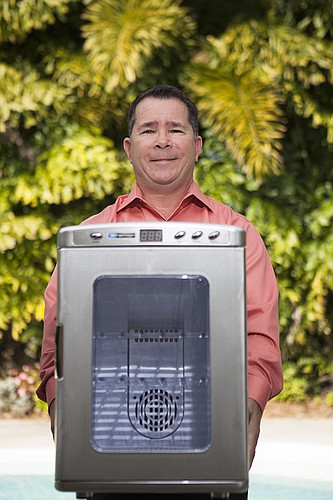- November 24, 2024
-
-
Loading

Loading

Making it as an entrepreneur doesn't necessarily require starting from scratch.
Scott Baker and his family understand that and have learned how to capitalize on an existing product. Their focus is taking something and making it better. “It's important to reinvent, not duplicate,” Baker says.
Scott Baker's son, Christopher, came up with their first product, the ReptiPro 5000, about seven years ago. The product is an egg incubator that automatically turns an egg every four hours until it hatches. The ReptiPro does more than $100,000 in sales per month, Scott Baker says.
The family's latest product, the GoFridge, launched last summer. It's a portable refrigerator that can be plugged into a car or a wall outlet. Unlike a standard cooler or mini-fridge, the GoFridge has the ability to chill or heat up to 140 degrees, Baker says.
But the key in launching a successful product, says Baker, goes far beyond simply having a good idea. “It's not only about inventing products,” Baker says. “It's about being able to market it.”
Baker's approach there is to delve deep into market possibilities before anything else. “Sell it first, then make it,” he says. “If you can't sell a make believe product, you won't be able to sell a real one.”
Baker suggests that before you take a product into mass production and marketing stages, you create a few prototypes and pay an entity — such as Amazon or eBay — to sell it for you. If someone tries to buy it and the prototypes have sold out, an “out of stock” just pops up.
Baker acknowledges that the sell-first, make second approach could be more costly, but he says it will be a less significant loss than mass-producing a product that doesn't sell.
The strategy has advantages, too. “It allows you to test the demand at different price points,” Baker says. “Then you can get customer feedback and make improvements.”
GoFridge started with 50 models for the first testing round. In the second round, 100 were produced, and “they flew off the shelf,” Baker says.
Next, Baker determined a reasonable price point and it was time to mass market and seek investors. “At that point, you can get everybody from Shark Tank to Kickstarter campaigns to help you because you've got a proven product and business model,” Baker says.
The GoFridge is now available for purchase for $99 on its website, GoFridge.net, and through online marketplaces such as Amazon and eBay.
The president of St. Petersburg-based Internet marketing agency Mark My Words Media, Baker says being able to adjust to market shifts on the fly is another integral lesson he's learned in consumer product retail. For example, the target customer for the GoFridge is not what Baker expected. “The idea was that it would serve cooler uses,” Baker says. Despite its portable features, light weight and ability to hold temperature, “that's not the case.”
Instead, he notices uses more fitting with those of a mini-fridge, such as in bedrooms, garages and college dorms. A big surprise has been video-gamers, he says, who “put diapers on so they don't have to walk away.”
GoFridge has big plans for the future. It's in talks with St. Petersburg-based online and TV retailer Home Shopping Network, to sell there. The company also seeks a licensing agreement with the National Football League, which would allow it to place skins of team logos on a GoFridge. The goal is to have a licensing partner for team decals by the 2016 season.
 What can fit inside of a GoFridge
What can fit inside of a GoFridge
-24 cans
-12 water or beer bottles
-9 wine bottles
-4 two-liter soda bottles
-45 juice boxes
-28 sandwiches
-4 pineapples
-4,896 jellybeans
-2 baby penguins
Follow Steven Benna on Twitter @steve_benna